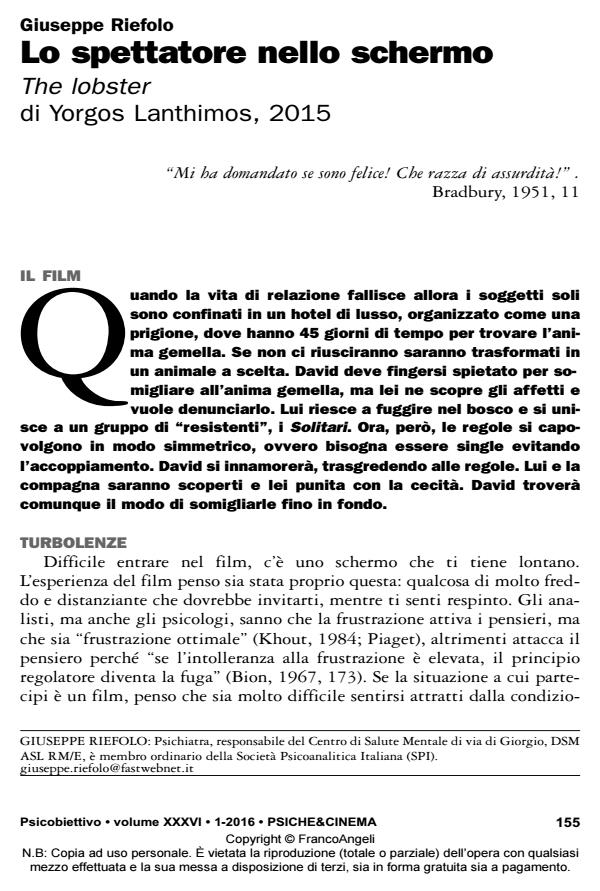The spectator into the screen. The lobster, by yorgos lanthimos
Journal title PSICOBIETTIVO
Author/s Giuseppe Riefolo
Publishing Year 2016 Issue 2016/1
Language Italian Pages 11 P. 155-165 File size 109 KB
DOI 10.3280/PSOB2016-001011
DOI is like a bar code for intellectual property: to have more infomation
click here
Below, you can see the article first page
If you want to buy this article in PDF format, you can do it, following the instructions to buy download credits

FrancoAngeli is member of Publishers International Linking Association, Inc (PILA), a not-for-profit association which run the CrossRef service enabling links to and from online scholarly content.
The movie suggests a behavioral code which is extremely concrete, as concrete and two-dimensional is the one of psychosis. The effort of the main characters may either be the sterile escape from a level of relationships based on the concreteness toward a symmetric other level, or to make subjective a reality through the lie. The first proposed use of the movie is what an analyst could interpret as "the experience of watching a film" that is being in the public to react to the stress of the film. Hence, the reactions of the audience indicate the therapist’s active and subjective participation to the psychotic block of the patient, just like in the care-processes when we are requested to operate in parallel, and as a screen, for the cold speech that the psychotic patient offers us. The movie pushes a reflection concerning the lie as a lucky solution and as a creative element that the patient can use to make subjective the reality that otherwise would automatically and fixedly repeat itself.
Keywords: Lobster; Lie; Psychoanalysis and Movie; Transformations in Psychoanalysis; Psychotic Communication.
Giuseppe Riefolo, Lo spettatore nello schermo. The lobster di Yorgos Lanthimos, 2015 in "PSICOBIETTIVO" 1/2016, pp 155-165, DOI: 10.3280/PSOB2016-001011